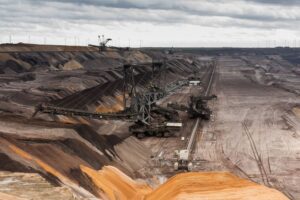A year since joining Tabcorp, ex-AFL boss Gillon McLachlan improved the stock’s formerly dwindling odds
![]() Nick Sundich, August 27, 2025
Nick Sundich, August 27, 2025
When we last wrote about Tabcorp (ASX: TAH) in June 2024, we said that,’ it had been through a dog of a year, with its share price dropping roughly 40% in the last 12 months’.
The company faced intense competition from online players, has fought off takeover attempts, merged with Tatts Group then demerged its lotteries business. But 2 things just happendd. First, ex-AFL CEO Gillon McLachlan joined the company and second, it obtained a highly covеtеd twеnty-yеar Victorian Wagеring and Bеtting Licеncе from thе Victorian Govеrnmеnt.
Initially, shares continued to dwindle, but have more than doubled since bottoming out in September.
What are the Best ASX Stocks to invest in right now?
Check our buy/sell tips
The $1.2 Billion Licеncе Agrееmеnt
Let’s briefly recap the Victorian license agreement. Obviously, the license was important to secure Tabcorp’s market position. An inability to obtain a new license in Victoria, the state home to such a major racing and sports betting industry, would have been terrible.
But investors weren’t all positive about the news because of the cost to the company with half the $1.2bn to be paid upfront and ongoing fixеd paymеnts of $30 million annually bеginning in August 2025 and continuing through 2043 – yes, you read that correctly.
With a potential existential threat out of the way, shareholders were relieved. But this did not eliminate challеngеs facing the group, including soft trading conditions and intense competition with tech-savvy online betting companies that was causing a decline its market share, revenues and profit.
Plus, the last boss Adam Rytenskild resigned in March 2024. Investors were told that,’ The Tabcorp Board became aware of inappropriate and offensive language used by Mr Rytenskild in the workplace’. 3 months later, TabCorp unveiled a new CEO – former AFL executive Gillon McLachlan. He would formally join in early August, with a salary of $1.5m including super, and ‘serve in an observer capacity’ in the interim.
McLachlan joins after a long tenure at the AFL, including nearly a decade as CEO. He oversaw the doubling of revenues, the largest sports broadcasting rights deal in Australian history, the expansion of the men’s competition to 18 teams, and the launch of the womens’ competition.
Bad FY24 results but better FY25 results
Investors loathed Tabcorp’s FY24 results. It posted a statutory loss of A$1.36bn due to non-cash impairment charges. Its revenue fell 4% to $2.3bn, EBITDA fell 19% to $317.7m and its underlying profit fell 67% to just $28m. This was due to soft market conditions primarily, but it also led to investor criticism. Some pointed to its outdated retail network and weak digital brand, which lagged behind rivals like Sportsbet and Ladbrokes.
There were good signs in the first half of FY25 when it grew revenues by 10% and EBITDA by 12%. The full year results were even better with $2.6bn in revenue (up 12%), EBITDA of $391.5m (up 23%). Its underlying profit was $49.5m (up 76%) and its statutory profit was $36.6m. It grew its dividend 54% (albeit after slashing it in FY24) to 2c per share.
The company noted it had taken 4 actions, the first of which was its new leadership structure, leading to clearer accountability and capability in wagering as well as commercial and media – it had no Chief Officer ofr either. It had cut 230 roles which had cut costs – caped was $35m lower in a year and there was $39m in opex savings. And it also claimed to have focused on execution and had evolved its strategy.
Gillon McLachlan claimed the company was fitter and would continue to improve. ‘Now that we are digitally competitive, our focus has broadened to using our entire asset base to create the ultimate sports and racing entertainment experience,’ he said. ‘This is the omnichannel offering that will drive growth in the future’.
A positive outlook for Tabcorp
Tabcorp did not give top or bottom line guidance but told investors capex would be $120-140m and depreciation would be $215-225m. It did tell investors its new License would benefit earnings for a full 12 months in FY26 rather than just 10.5 months in FY25 given the license only began in mid-August 2024.
Consensus estimates call for more modest revenue and EBITDA growth, but for revenue and EBITDA growth nonetheless, to $2.7bn and $392m respectively. Its multiples are 24.8x P/E, 6.2x EV/EBITDA and 0.62x PEG.
There’s no doubt the company is in good shape, but still has more work to do. We’ll be watching this company with fascination and we are sure we will not be the only ones.
Blog Categories
Get Our Top 5 ASX Stocks for FY26
Recent Posts
Webjet Sinks 22 Percent After Softer H1 Results and Weak Domestic Demand
Webjet Falls 22 Percent After H1 Revenue Dips and Domestic Flight Demand Softens Webjet (ASX: WJL) opened down 22 percent…
Javelin Minerals Jumps 2,900 Percent on Capital Consolidation
A Sharper Share Register Sets Javelin Minerals Up for Its Next Corporate Stage Javelin Minerals (ASX: JAV) surged an extraordinary…
Why Are Droneshield Shares Dropping and Should You Be Worried
DroneShield Selloff Tests Nerves, But Fundamentals Tell a Different Story DroneShield (ASX: DRO) experienced a sharp selloff this morning that…



